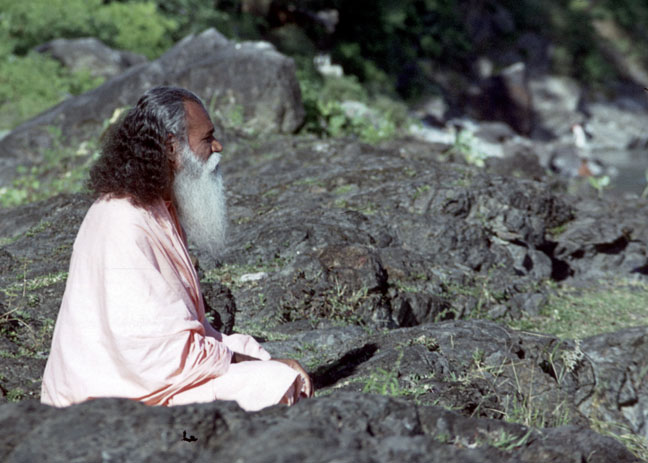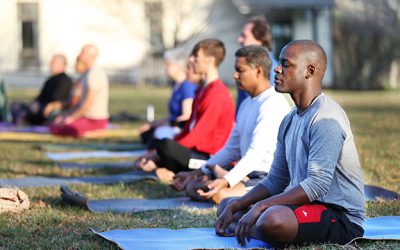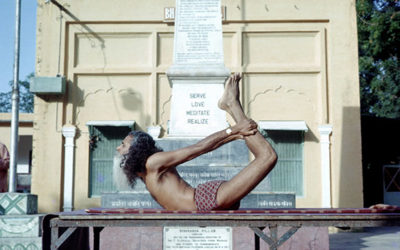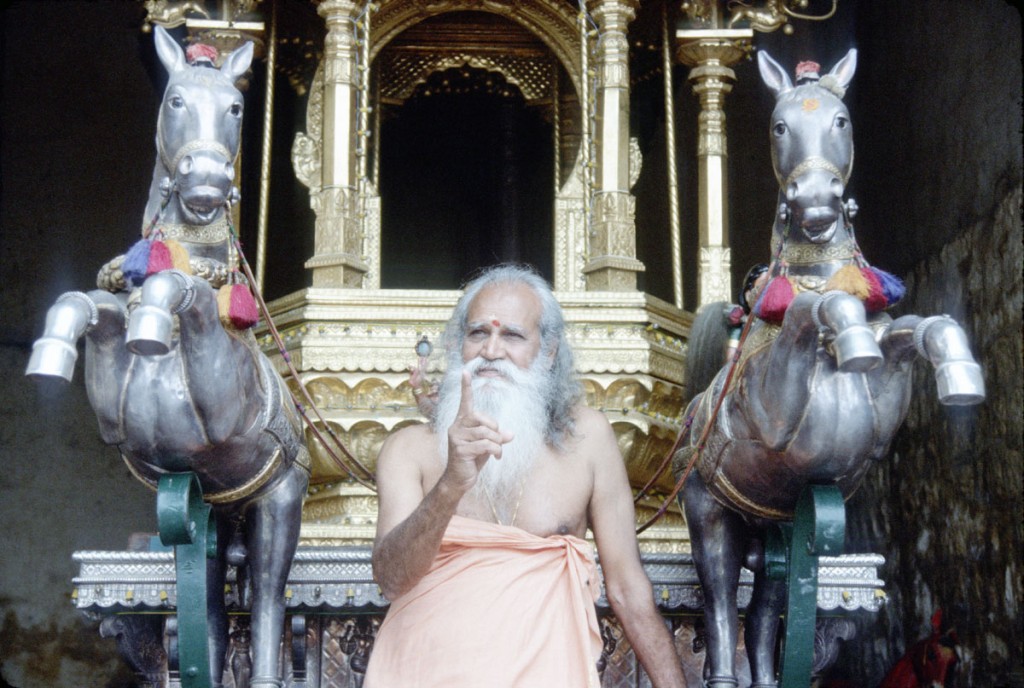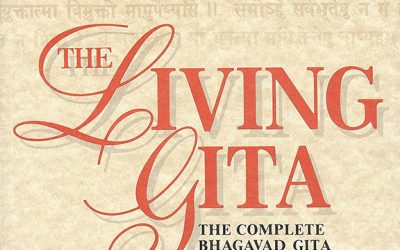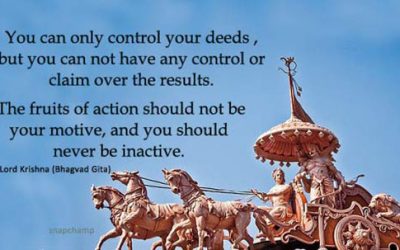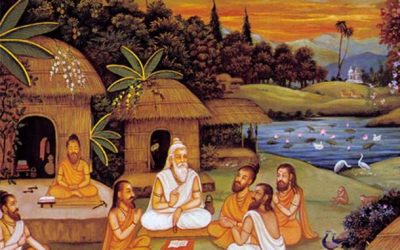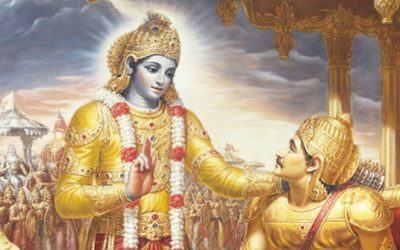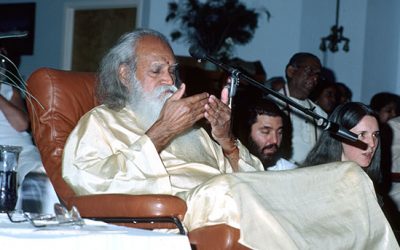Gurudev Sivanandaji used to tease the so-called Vedantins and Jnana Yogis at the ashram. They would say, “Aham Brahmasmi, I am that Supreme Brahman.” Occasionally, Gurudev would touch a jnani’s arm with a little piece of stinging nettle. That person would jump up,...
Mantra Japa: One Practice Is All You Need
In the Yoga Sutras, Sri Patanjali Maharishi lists nine obstacles, which cover a range of physical, mental, and spiritual problems. They are: disease, dullness, doubt, carelessness, laziness, sensuality, false perception, failure to reach firm ground, and slipping from...
Mantra Yoga
The goal of all spiritual paths is the same—to realize the Universal Spirit. This Spirit, which is referred to by various names, is all-pervading. Essentially, we are that Spirit. Yet, we do not experience it because of the limitations of our body, mind, and ego. One...
Hatha Yoga: Path to Self-Realization
Hatha Yoga is the physical aspect of the path to Self-Realization. The body is the vehicle which carries the Self on its journey through time and space. It is the temple wherein dwells the Divine. The body is not an obstacle or stumbling block in the spiritual life,...
The Benefits of Hatha Yoga
If you wish to eliminate the toxins that have already found room in the body, then Hatha Yoga can help. The Yoga postures and breathing techniques purify the physical body. Even if you have developed some bad habits, by practicing Hatha Yoga you will lose all the...
The Story Behind the Bhagavad Gita
In this article, Sri Swami Satchidananda gives us an overview of the "backstory" that sets the stage for one of Yoga's great, foundational texts—the Bhagavad Gita. My Master, Sri Swami Sivanandaji Maharaj, said this about the greatness of the Gita: "The Gita expounds...
The Living Gita: Chapter 2 on Steady Wisdom
Sri Swami Satchidananda often quoted from Chapter Two of the Bhagavad Gita in his talks around the globe. He emphasized the importance of the slokas (verses) 54-72 because he said that if we are on a spiritual path, we should have some sense of where we are headed. He...
The Living Gita: Chapter 1
In this article, you can read the first chapter (The Despondency of Arjuna) of the Bhagavad Gita from Sri Swami Satchidananda's book, The Living Gita. Sri Swamiji makes the entire Bhagavad Gita so accessible to the modern reader. The Despondency of Arjuna The first...
Lessons from the Gita: Don’t Eat the Fruit
There is a great joy in giving—in sharing and caring—and not expecting anything in return. That’s what we learn from the Bhagavad Gita. You are born to serve, but not to look for the fruits of that service. Offer the fruit to everybody. That is what is meant by the...
Introduction to the Bhagavad Gita
The ancient Indian scriptures are known collectively as the Vedas. The Bhagavad Gita comes from the Vedas. But what are the Vedas? The root vid means knowledge. According to the Hindus, the Vedas are holy scriptures. Any scripture that talks about the truth is a Veda....
The Yoga of Devotion
Sri Swami Satchidananda recommended that his students memorize these twenty slokas in Chapter 12 of the Bhagavad Gita. These slokas explain the essence of Bhakti Yoga, one of the main branches of Integral Yoga. He said, “This twelfth chapter is really important. It...
Bhagavad Gita: The Beloved Lord’s Secret Love Song
Dr. Schweig’s brand new book, Bhagavad Gita: The Beloved Lord’s Secret Love Song is described by Huston Smith (the internationally recognized authority on world religion) as a “beautiful and accessible translation of the Gita.” In this interview, Dr. Schweig explains...
Listening to the Sound Within
Nada Yoga is the Yoga of sound and it includes practices using sound formulas and mantras. Mantra repetition itself is a Nada Yoga practice. Through repeating the mantra, you gradually develop that sound vibration within. After practicing for a long time, you will be...
The Integral Yoga Approach to Balancing the Emotions
Integral Yoga master teacher Swami Vidyananda’s workshops on Yoga and the emotions explore Integral Yoga techniques that bring greater harmony within oneself and to one’s relationships. These workshops use Hatha Yoga and meditation, as well as sacred imagery,...
Emotional Self-Mastery
Emotions are part of the mind and are one part of its functioning. According to Raja Yoga, there are several different ways the mind functions: the analytic mind, the feeling mind, the thinking mind and the desiring mind. Some people think if you are a big yogi, you...
“As You Think, So You Become”
There is a Sanskrit saying that Swami Satchidananda often quoted: “Mana eva manushyanam karanam bandha mokshayoho.” It means: “As the mind, so the individual. Bondage or liberation are in the mind.” In other words, “As you think, so you become.” If you think well, you...



